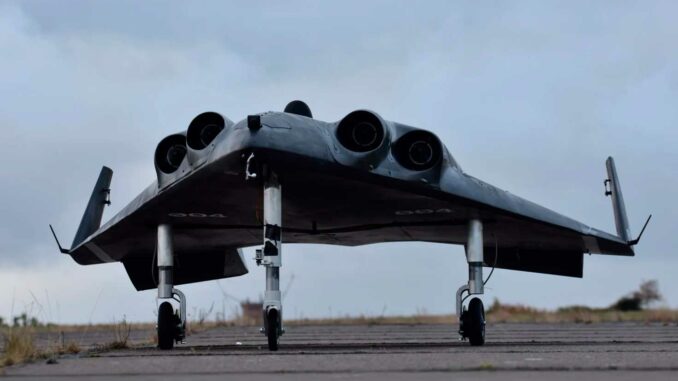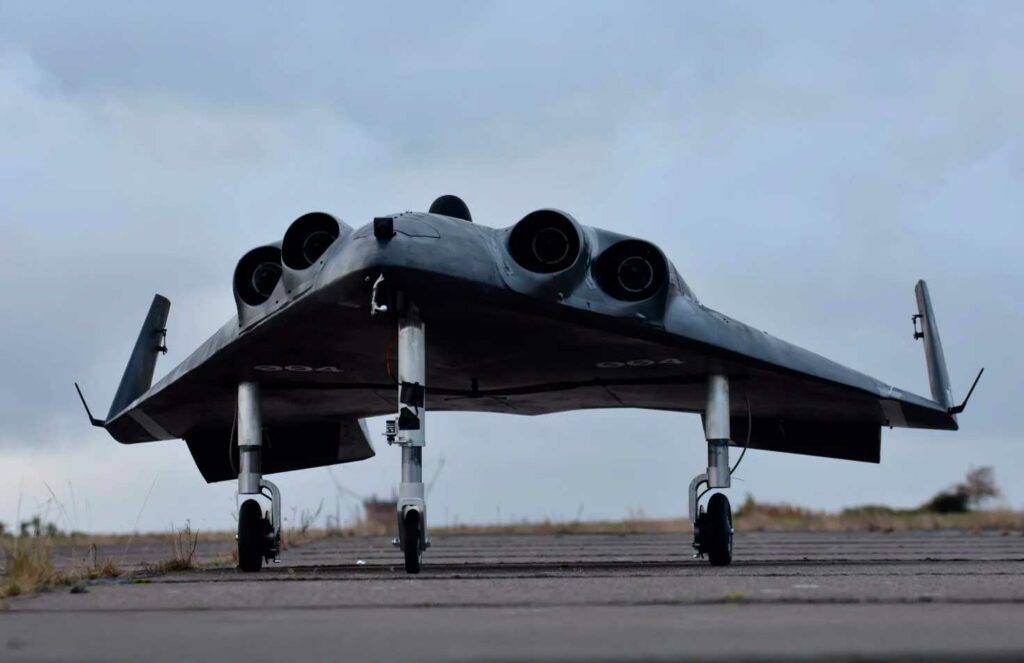
Germany is developing a reusable space drone equipped with IRIS-T missiles, in partnership with Diehl Defence and POLARIS Raumflugzeuge.
German company Diehl Defence is partnering with POLARIS Raumflugzeuge GmbH to create an unmanned aerial strike system called AirLAS. This program integrates the IRIS-T missile, already used by NATO forces, into a reusable space vehicle capable of operating in multiple environments: air, sea, and ground. The aim is to extend the range of missions while limiting costs and human risk. This system could be integrated into future defense architectures such as SCAF (FCAS) and meet distributed combat requirements. The first test flights are scheduled for 2025. This is also a step forward in the German hypersonic aviation program, with the development of an experimental biplane vehicle capable of launching satellites or military payloads at high altitude.
An industrial alliance between Diehl Defence and POLARIS for an innovative strike drone
The partnership signed at the 2025 Paris Air Show between Diehl Defence, a specialist in guided munitions, and POLARIS Raumflugzeuge, a German company developing reusable space planes, marks a turning point in Germany’s approach to air defense. The project, called Airborne Launching and Attack System (AirLAS), involves integrating IRIS-T missiles onto an autonomous unmanned vehicle with horizontal takeoff and landing capabilities.
This cooperation is part of a drive for increased mobility, cost reduction, and operational versatility, replacing fixed ground-to-air systems with a reusable mobile platform. The AirLAS system is based on a vehicle already flight-tested by POLARIS, with orbital or suborbital performance. It would allow for increased range while circumventing hostile airspace constraints.
The IRIS-T missile is a short-range (up to 25 km) highly maneuverable missile used on fighter jets such as the Eurofighter Typhoon and Gripen. Adapting it to a drone makes it possible to carry out strikes beyond enemy lines without risking human casualties. It is also a response to the current trend among armed forces to integrate distributed and autonomous systems, particularly in the face of the saturation of anti-aircraft systems by inexpensive drones.
This partnership follows a public contract signed in February 2025 between POLARIS and the BAAINBw (Bundesamt für Ausrüstung, Informationstechnik und Nutzung der Bundeswehr), confirming Berlin’s willingness to invest in hypersonic technology and operational autonomy. The aircraft is intended for multiple uses, both civilian and military.
Towards a modular system for distributed warfare and hypersonic technology
The AirLAS system is presented as modular, meaning that it can evolve according to operational needs and be configured for different missions: interception, rapid strike, observation, or space launch. This approach is in line with modern warfare doctrines that prioritize platform dispersion, survivability, and reconfigurability in the face of multi-domain threats.
By integrating a reusable platform, the program enables a reduction in unit cost per mission. By way of comparison, an IRIS-T missile costs around $400,000, while the development of a reusable drone can drastically reduce logistics costs and the need for skilled personnel. A fighter jet requires an average of 30 hours of maintenance for every hour of flight time, whereas an automated drone can be programmed for shorter cycles with less human intervention.
The use of IRIS-T as ammunition also paves the way for further developments: configurations with air-to-ground missiles and even hypersonic missiles are conceivable. AirLAS could thus become a launch platform for new long-range strike systems.
Manufacturers are already considering integration into future European programs, such as the FCAS (Future Combat Air System), led by Germany, France, and Spain, or in modules carried on naval vessels. This logistical flexibility would enable rapid power projection, particularly in contexts such as NATO missions in the Baltic Sea or the Sahel.

A demonstrator for the German and European space future
At the same time, the POLARIS hypersonic drone designed under the contract with BAAINBw is biplane and fully reusable. This is a large-scale project, with horizontal takeoff and landing, eliminating the need for vertical space infrastructure such as launch pads. The vehicle could reach speeds of over Mach 5 and serve as a technology test bed, an experimental military platform, and a launcher for small satellites.
The ability to launch a payload into low orbit gives Germany strategic autonomy in accessing space. This is all the more important given that current geopolitical tensions are prompting Western powers to reduce their dependence on US launch services or commercial platforms.
Such a vehicle would also serve as a test for thermal resistance, high-speed navigation, and advanced inertial guidance technologies. These technologies are crucial in the development of offensive hypersonic systems, such as long-range gliding missiles. On an industrial scale, this could lead to a sovereign production base, similar to what France is developing with MBDA for its ASN4G and Aquila programs.
The fact that the drone can also be used for scientific missions further enhances the program’s appeal: depending on its configuration, it can carry sensors, optical instruments, or research modules and perform suborbital flights without a military payload.
Operational prospects for Germany and its European allies
The AirLAS system and its integrated space vehicle meet three major contemporary military priorities: strategic reach, reduction of human risk, and cross-domain adaptability. As an unmanned platform, AirLAS could operate in contested areas without requiring the prior suppression of enemy defenses. It is also conceivable to deploy several units in swarms or to use the drone as a tactical communications relay.
For NATO forces, sharing such technology offers economic and strategic advantages. European fighter fleets—including the Eurofighter, Gripen, and Rafale—could benefit from remote firing capabilities, with drones able to pre-position IRIS-T missiles in remote areas.
The entry cost of such a system remains to be determined, but manufacturers are betting on operating costs per mission lower than those of a fighter jet, thanks to the drone’s reusability and automation. If these promises are kept, AirLAS could compete with systems such as the Australian Loyal Wingman and the American Kratos Valkyrie.
Finally, there is also a political stake: by developing such technology independently, Germany is sending a signal about its ability to master the entire production and use cycle of a military space vehicle, including within the European framework. This is helping to redefine the role of German industry in future European conventional deterrence, at a time when programs such as SCAF are progressing at a slow pace.
War Wings Daily is an independant magazine.